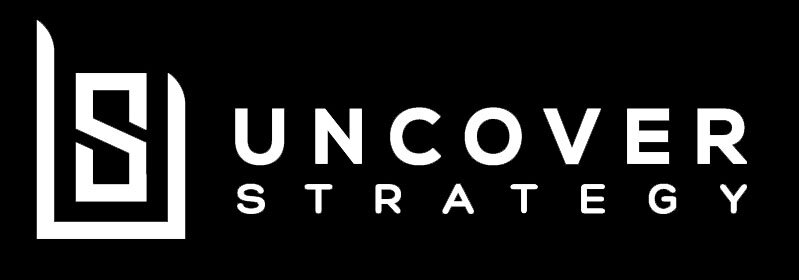This $1,035.00 Peanut Butter Has a Tactical Reason to Exist
̶B̶i̶a̶s̶.̶
Good news!
The well-known US organization National Institute of Standards and Technology (NIST), founded in 1901, is now selling peanut butter! Their asking price for three single-packed sachets 170g each?
1,035.00 USD.
It doesn’t get any more “standard”.
Yes, you heard that right: If you want a “Peanut Butter Jelly” sandwich with an official touch, it will run you a little more pricey. But, overall, it’s official and tested, right? So this must be worth it.
Worth it? Hold on there for a second. I have two questions:
1) Why am I reading this on a blog that discusses business strategy and strategic thinking and
2), why are the stirred-up peanuts from NIST so utterly expensive when I can get a jar from my local supermarket for not even 3 USD? This must be a mistake. For sure.
This price for peanut butter is not a mistake.
Excuse me? The price is not a mistake? But why? Why is this standard breakfast item going for this price? And why does an organization that cares about standardization drift off into the world of groceries?
About NIST - What they are, when and why it started and more. (Source: www.nist.gov)
Before I go on any further, let’s try to shine some light on this question in the light of strategic thinking. I chose this example to show something. Just give me a hot minute, will you?
Have a look at the pyramid below. And before you keep reading on, if you would have to label the level to the peanut butter example from NIST, where would you put it? This might be hard, but give it a try. Where could you fit this expensive peanut butter? What explanations could you attach to it?
Maybe it was an April fools joke?
One more of those ridiculously useless gift products such as a USB pet rock?
Think harder; there is a reason for this.
I was laughing the first time I heard that NIST would offer peanut butter. FoodNetwork agrees that this might be the most expensive peanut butter in existence (Source: FoodNetwork, 2017). But there is a good reason for it. Let me explain.
Vision, Strategy, and Tactics for NIST.
When purchasing from NIST, you know that what is on the label is what you get. In fact, it is exactly that. And it’s precise.
Vision
A vision for a company is expressing its core values and what it should be and do in the future. Famous in many business books (at least a lot of my uni books) by now is the original vision of founder Bill Gates (which changed in 2013 with its new CEO Steve Ballmer): “A computer on every desk and in every home.” A bold statement for its time when people viewed this idea as Gates would be out of his mind.
NIST’s vision is stated as: ”NIST will be the world's leader in creating critical measurement solutions and promoting equitable standards. Our efforts stimulate innovation, foster industrial competitiveness, and improve the quality of life.”
This still doesn’t tell you much about why that peanut butter is so expensive? Me neither. Let’s continue.
Strategy
A broader plan, or multiple plans (you could call it a roadmap) how you plan to get closer to your long-term vision set before is referred to as your strategy. Your strategy must consider your position, environment, and ongoing change - and how you plan to deal with it (as I touched on before). What is your course of action (that might change) from a broader perspective? For example, if you plan to be the most reliable delivery service - how can you ensure this distinction among others and the market?
As these variables meet, they become more concrete for NIST. According to its public information, it aims to achieve its vision through: “Measurement science, rigorous traceability, and development and use of standards.”
I’m still with you if you say you are not quite sure how that peanut butter slipped in their product portfolio.
Tactics
Here is where things get concrete. Tactics describe specific actions that derive from your strategy, the order, and scheduling.
One of the services NIST provides is to measure products exactly or provide certified exact products. When you purchase these services through their extensive shop offerings, you can rest assured that it is correct. This is often important for labs that need to calibrate their equipment. You can do exactly this with an exact concentration, amount, or doses of a substance or dataset that you know is correct.
And this is exactly where Peanut Butter sits in this. Peanut butter is a common base ingredient for many products, and production slowly increased throughout the last two decades, according to statista.com. Therefore, to calculate calories or conduct other food-related measurements, you will need to know that the product you are using to establish a baseline is exactly the “standard” peanut butter. No more and no less.
Linking back to the vision and strategy of NIST, one could say that if NIST wants to be the world’s leader in measurement solutions, peanut butter should be on that list of offerings to secure and expand the leading position. Now they can provide samples to calibrate machines related to peanut butter.
Challenge biases.
When I first heard about this “luxury” peanut spread, I thought to myself that someone somewhere went crazy. It must have been a simple marketing strategy - or have some insanely expensive and usually unrelated ingredients, and you wouldn’t find them in a regular peanut butter product. However, the “clickbaity” title made me go for it (sadly, I was trying to shy away from some uni work). And after the first few lines, I realized: A well-reputed institution is sitting behind it.
And it got me interested.
Not a product of NIST and more of a marketing joke: A wireless peanut keyboard - for sale at the Ballpark in Arlington, Texas. How do you even see the letter properly if you do not 10-finger-type?
Source: Simon Beuse, 2012
Reading about this topic made me realize my slight bias. I was immediately turned away by the title I originally read (The $761 Peanut Butter and Other Insanely Expensive Government Products). Often, that bias becomes true - often things are pure marketing. And it helps someone to be cautious out there and constantly questions the interests of the stakeholder wanting something from you (e.g., in this case: a news site wants your attention to generating ad revenue). However, it made me realize there is one. And being aware or fighting it can sometimes lead to surprising results. Just as this blog post today.
What do you think when you first heard the title of this blog post? Did you think I turned into a “clickbait”-generating machine hungry for ads? Does the strategy of NIST make sense to you, or do you see flaws? Let me know via any channel below. I would be excited to hear from you.





